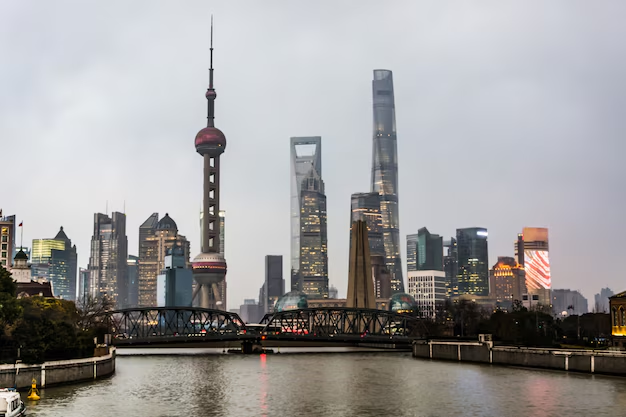Celebrating 60 years since its debut, Japan’s Shinkansen—popularly known as the bullet train—has transformed travel across Japan and beyond. Marking the birth of modern high-speed rail, this sleek, cutting-edge marvel was the first of its kind, connecting major cities at unprecedented speeds and changing the way the world moved.
The Birth of the Shinkansen: A Milestone in Global Travel
On October 1, 1964, days before the Tokyo Olympics, Japan launched the world’s first high-speed rail service: the Shinkansen. Dubbed the “bullet train” due to its streamlined design and blistering speed, the Shinkansen introduced a new concept of travel. The inaugural line, the Tokaido Shinkansen, connected Tokyo and Osaka, covering 515 kilometers in just four hours, a significant reduction from the previous travel time of six and a half hours.
At the time, the Shinkansen’s top speed of 210 km/h was revolutionary. Today, the trains run at speeds up to 285 km/h, cutting the journey time between Tokyo and Osaka to just two hours. The system has grown into an expansive network, with nine lines connecting cities across Japan.
However, this engineering marvel wasn’t born without challenges. Post-war Japan’s infrastructure was significantly damaged, and there were doubts about whether the country could afford such an ambitious project. Rail use in the U.S. had been declining, leading to skepticism about the viability of a high-speed rail system in Japan. Yet, Japan’s booming economy in the 1950s paved the way for innovation, and the Shinkansen project became a national priority.
Overcoming Challenges to Build the World’s Fastest Train
Japan’s mountainous terrain presented considerable engineering obstacles, but the Shinkansen’s success is a testament to the nation’s ingenuity. The train’s iconic long-nose design minimized air resistance, allowing it to pass through tunnels with ease. Earthquake detection systems were implemented to halt the train quickly in the event of seismic activity, and innovative features like the tilting mechanism allowed the train to navigate curves at high speeds while maintaining passenger comfort.
As a result of these advances, the Shinkansen became not only a symbol of Japan’s post-war recovery but also a global icon of cutting-edge technology. Its development transformed how engineers approached high-speed rail worldwide.
Reshaping Japan’s Urban Landscape
The introduction of the Shinkansen did more than revolutionize transportation—it reshaped Japan’s urban environment. Cities along the Shinkansen routes experienced rapid growth, benefiting from the ease and speed with which people could travel for work and leisure. The ability to commute long distances in mere hours made it possible for people to live further from major urban centers, while still maintaining strong professional connections in Japan’s largest cities.
The economic benefits were palpable. The high-speed rail network stimulated development and created new opportunities in industries like tourism and business. However, the Shinkansen’s success also contributed to rural depopulation, as younger generations gravitated toward major urban areas, using the train to visit family in the countryside.
Christopher Hood, a researcher at Cardiff University and author of Shinkansen: From Bullet Train to Symbol of Modern Japan, notes that the train dramatically changed business culture in Japan. “Face-to-face business remains very important in Japan, and the Shinkansen has facilitated this culture, allowing professionals to easily travel between meetings in distant cities.”
The Pinnacle of Japanese Efficiency
The Shinkansen is renowned for its reliability, safety, and punctuality. The Tokaido Shinkansen line, for instance, serves nearly a quarter of a million passengers each day. Nozomi trains, the fastest service on the line, depart every five minutes, ensuring passengers can always find a seat.
Incredibly, despite the enormous volume of passengers and services, the average delay on the Shinkansen network is less than one minute—a level of efficiency that has become legendary in Japan. Over its 60-year history, the Shinkansen has maintained a spotless safety record, with no fatalities or injuries from train accidents.
Efficiency even extends to the cleaning process. At Tokyo Station, cleaning crews have just seven minutes to clean an entire train between services, ensuring that the trains run smoothly without sacrificing cleanliness or comfort for passengers.
Inspiring High-Speed Rail Around the World
The success of the Shinkansen didn’t go unnoticed by the rest of the world. Its introduction spurred a global interest in high-speed rail technology. France followed with its TGV trains in 1981, and Germany introduced its Inter-City Express (ICE) in 1991. Countries like China and Taiwan also adopted high-speed rail, with Japan’s technological expertise playing a pivotal role in shaping their development.
Japan’s Shinkansen technology has been exported internationally, including in the UK, where Hitachi-built Intercity Express Trains use elements derived from the Japanese bullet trains. This global influence has cemented Japan’s position as a leader in transportation innovation.
The Future of High-Speed Rail in Japan
As Japan looks to the future, it continues to push the boundaries of high-speed rail technology. An extension of the Hokkaido Shinkansen to Sapporo is slated for completion after 2030, promising to connect more regions to Japan’s thriving cities.
Looking ahead, Japan Rail (JR) East is also exploring the possibility of introducing driverless bullet trains by the mid-2030s. As Japan faces an aging population and labor shortages, automation could become a vital component of maintaining the country’s transportation infrastructure.
In addition to advancements in automation, Japan is working on a high-speed magnetic levitation (maglev) line, which is expected to revolutionize rail travel once again. Capable of reaching speeds of up to 500 km/h, the maglev trains were originally set to begin service between Tokyo and Nagoya by 2027. However, due to environmental concerns, the timeline has been pushed back to 2034 or later.
Despite these challenges, the goal is to establish a “dual system” with both Shinkansen and maglev services. This would allow Japan to continue offering the most advanced and reliable rail service in the world, ensuring smooth operations even during maintenance or natural disasters like earthquakes.
The post Shinkansen, Engineering Excellence at 60: A Technological Revolution on Rails appeared first on Travel And Tour World.




Comment (0)